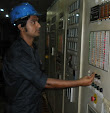Temperature Sensors
Taking a temperature essentially requires the transmission of a small portion of the object’s thermal energy to the sensor, whose function is to convert that energy into an electrical signal. When a contact sensor (probe) is placed inside or on the object, heat conduction takes place through the interface between the object and the probe. The sensing element in the probe warms up or cools down; that is, it exchanges heat with the object. The same happens when heat is transferred by means of radiation: thermal energy in the form of infrared light is either absorbed by the sensor or liberated from it depending on the object’s temperature and the optical coupling. Any sensor, no matter how small, will disturb the measurement site and thus cause some error in temperature measurement. This applies to any method of sensing: conductive, convective, and radiative. Thus, it is an engineering task to minimize the error by an appropriate sensor design and a correct measurement technique.
 |
| Thermocouple |
 |
| Thermistor |
When a temperature sensor responds, two basic methods of the signal processing can be employed: equilibrium and predictive. In the equilibrium method, a temper-ature measurement is complete when no significant thermal gradient exists between the measured surface and the sensing element inside the probe. In the predictive method, the equilibrium is not reached during the measurement time. It is determined beforehand, through the rate of the sensor’s temperature change. After the initial probe placement, reaching a thermal equilibrium between the object and the sensor may be a slow process, especially if the contact area is dry.
A typical contact temperature sensor consists of the following components.
- A sensing element: a material which is responsive to the change in its own tem- perature. A good element should have low specific heat, small mass, high thermal conductivity, and strong and predictable temperature sensitivity.
- The contacts are the conductive pads or wires which interface between the sensing element and the external electronic circuit. The contacts should have the lowest possible thermal conductivity and electrical resistance. Also, they are often used to support the sensor.
- A protective envelope is either a sheath or coating which physically separates a sensing element from the environment. A good envelope must have low thermal resistance (high thermal conductivity) and high electrical isolation properties. It must be impermeable to moisture and other factors which may spuriously affect the sensing element.
All temperature sensors can be divided into two classes: the absolute sensors and the relative sensors. An absolute temperature sensor measures temperature which is referenced to the absolute zero or any other point on a temperature scale, such as 0◦C (273.15◦ K), 25◦C, and so forth. The examples of the absolute sensors are thermistors and resistance temperature detectors (RTDs). A relative sensor measures the temperature difference between two objects where one object is called a reference. An example of a relative sensor is a thermocouple.
Classification of temperature sensors
1. Thermoresistive Sensors: Thermoresistive sensors can be classified as belows
1. Thermoresistive Sensors: Thermoresistive sensors can be classified as belows
- Resistance Temperature Detectors
- Silicon Resistive Sensors
- Thermistors-Thermistor can be classified in a) NTC & b) PTC thermistor.
3. Semiconductor P-N Junction Sensors
4. Optical Temperature Sensors: Optical sensor can be classified as belows
- Fluoroptic Sensors
- Interferometric Sensors
- Thermochromic Solution Sensor
6. Piezoelectric Temperature Sensors








